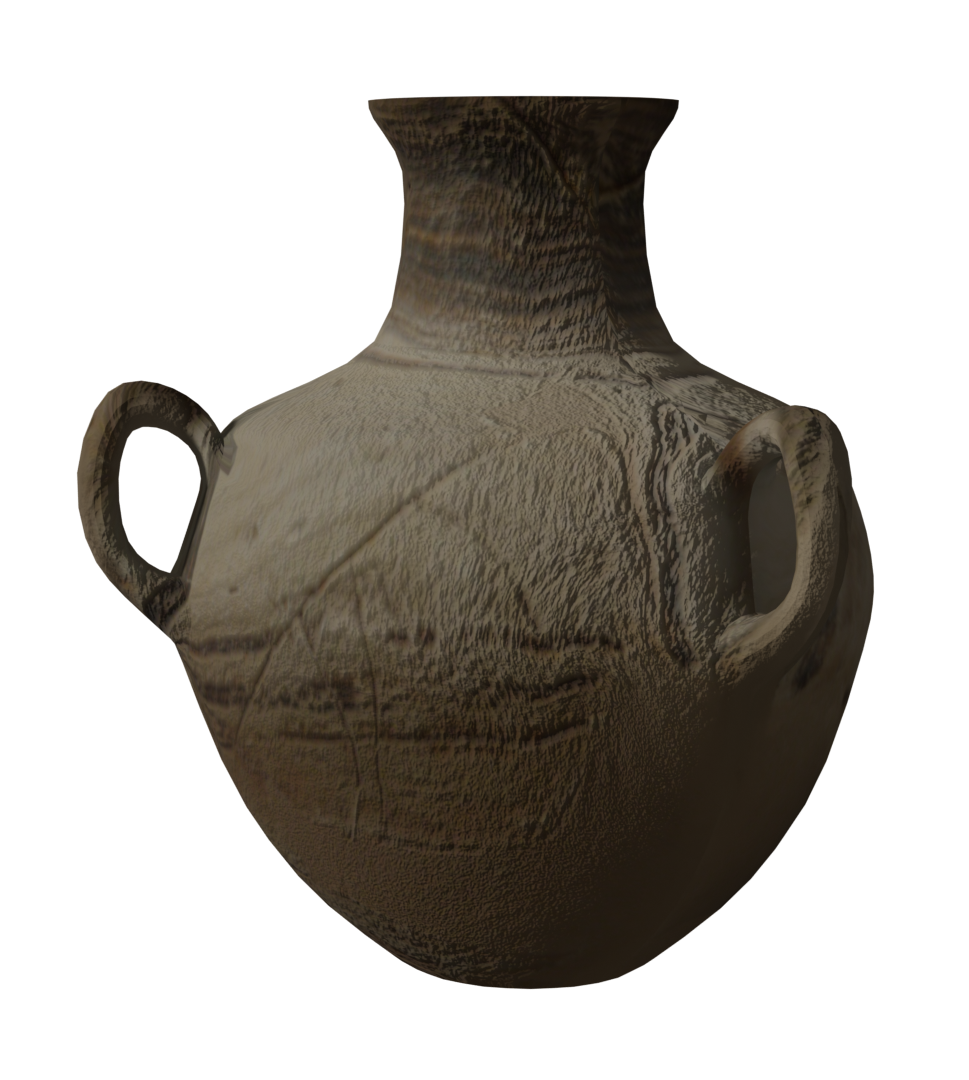Mazarakata / 2024
Overview
Greece: Design, Culture, and Representation is a study abroad program that examines the interplay between history, culture, and community in Greece. Our project involved scanning and digitally documenting the Mycenaean burial site in Mazarakata to preserve it from natural disasters and other threats. By archiving the site, we aimed to emphasize its historical, cultural, and ritual significance, especially as many artifacts have been lost or are no longer protected by the Greek government.
This project aims to digitally preserve the Mycenaean Burial site in Mazarakata and highlight ancient culture in collaboration with the Greek Ministry of Arts and Culture. We documented the site using 3D scanning, interviewed locals about its significance, and developed a website proposal to create a public digital experience of this heritage.
Project Objectives
As part of the UX/UI team, my role involved designing and prototyping the website mockup in Figma. I focused on creating an engaging and intuitive user interface for both public and academic audiences to view and learn more about the Mazarakata burial site. I also edited and provided voiceover for the video showcasing our research and findings.
My Role
Walkthrough Video
User Interface
With our user interface, we not only aimed to provide information on the history and excavation of the burial sites but also to guide users through the content and 3D experiences in an immersive and engaging way using interactive maps.
Visual Identity
The user interface employs a neutral color palette, with red and blue used sparingly to indicate interactions, inspired by the colors used in Mycenaean paintings. Decorative patterns from excavated Mazarakata pots are featured on each page, while a simple circle motif organizes and displays information.
The title font is Faustina, while the body text is set in Epilogue, both chosen for their readability and style. Standardized, accessible icons further enhance usability, ensuring a clean and intuitive user experience.
The task flow begins with introductory information about Kefalonia, followed by an interactive map displaying Mycenaean sites and major cities on the island. A timeline shows information about the excavation and discovery of cemeteries in Kefalonia, along with preservation data for each historical site. In the library archive, documents and artifacts related to the sites are accessible, with a search bar for easy navigation.
Taskflow
Selecting a specific site opens a map offering detailed information about the tombs, including above-ground, below-ground, and tomb-level views. This leads to a 3D experience for Tomb N, allowing exploration through multiple viewpoints, with detailed measurements, information, and artifacts presented in an immersive environment.

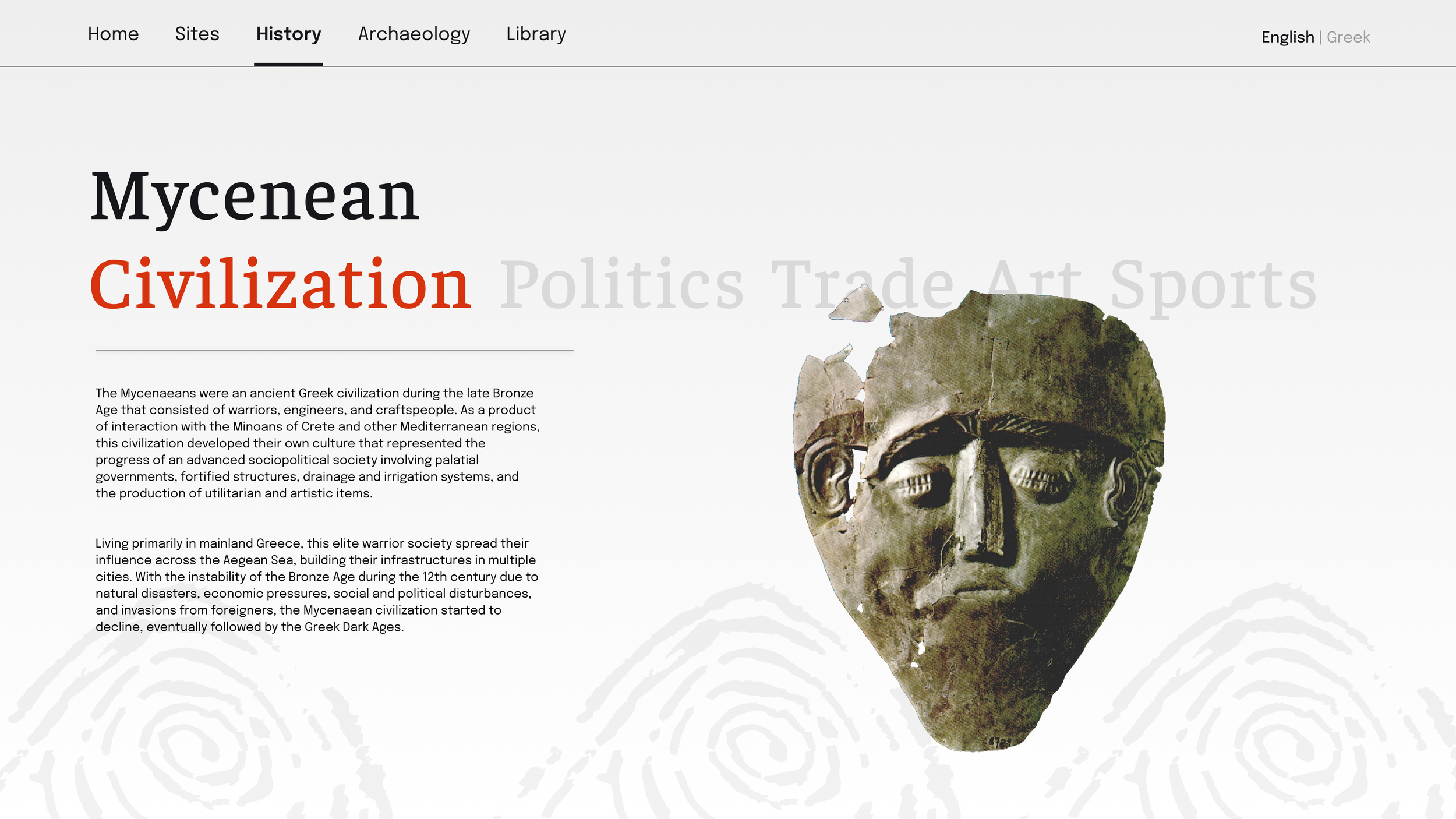
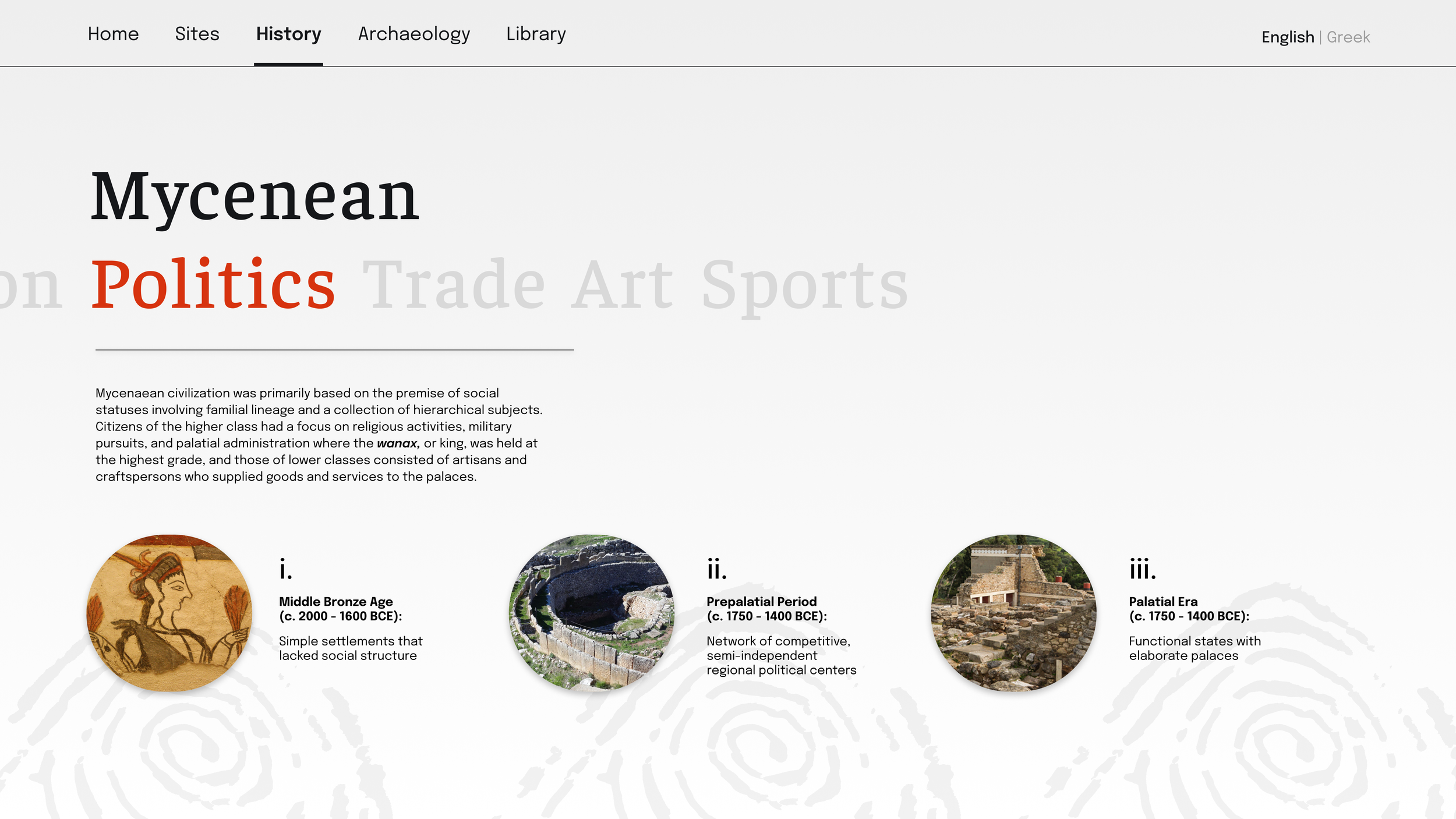







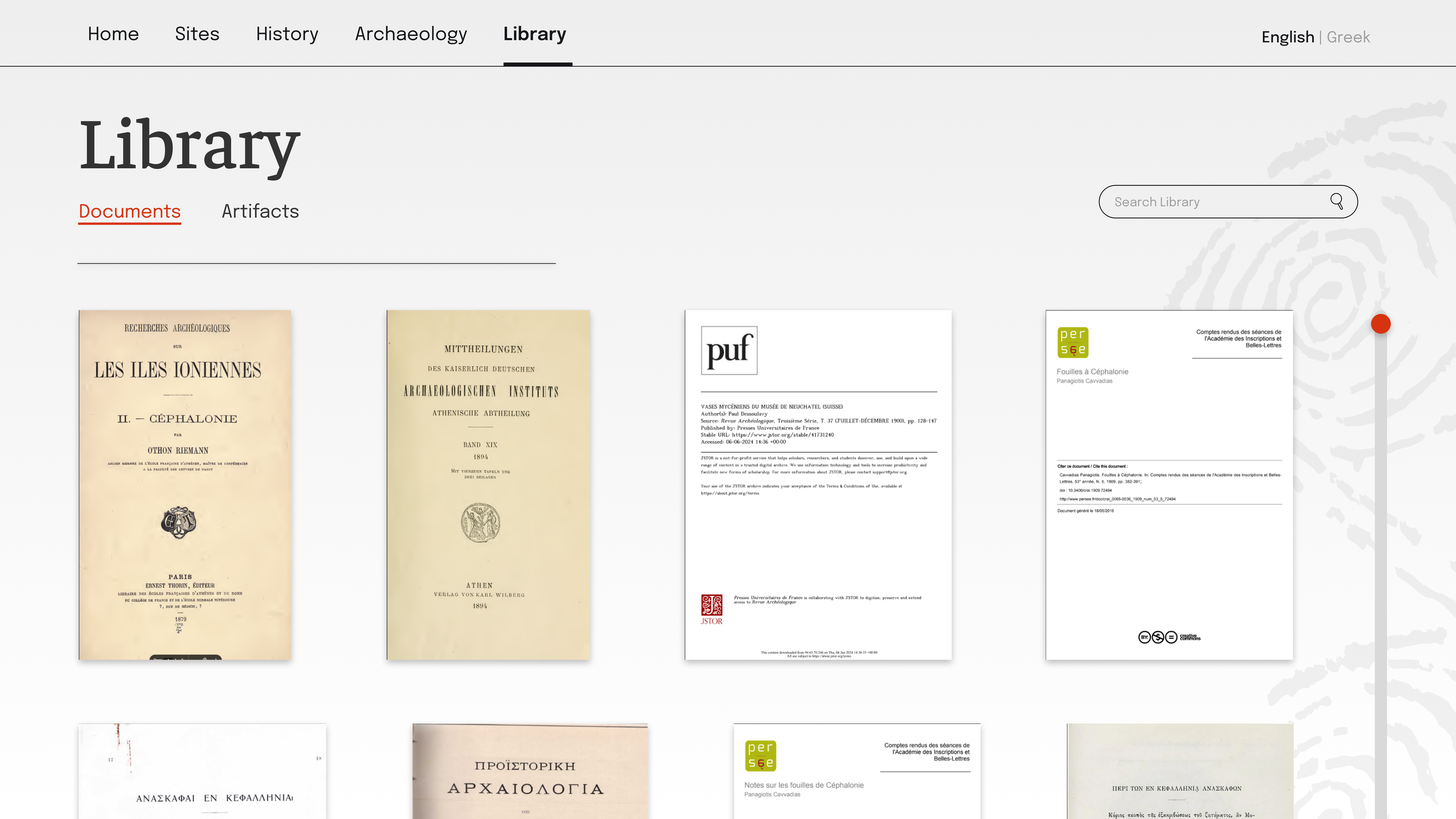
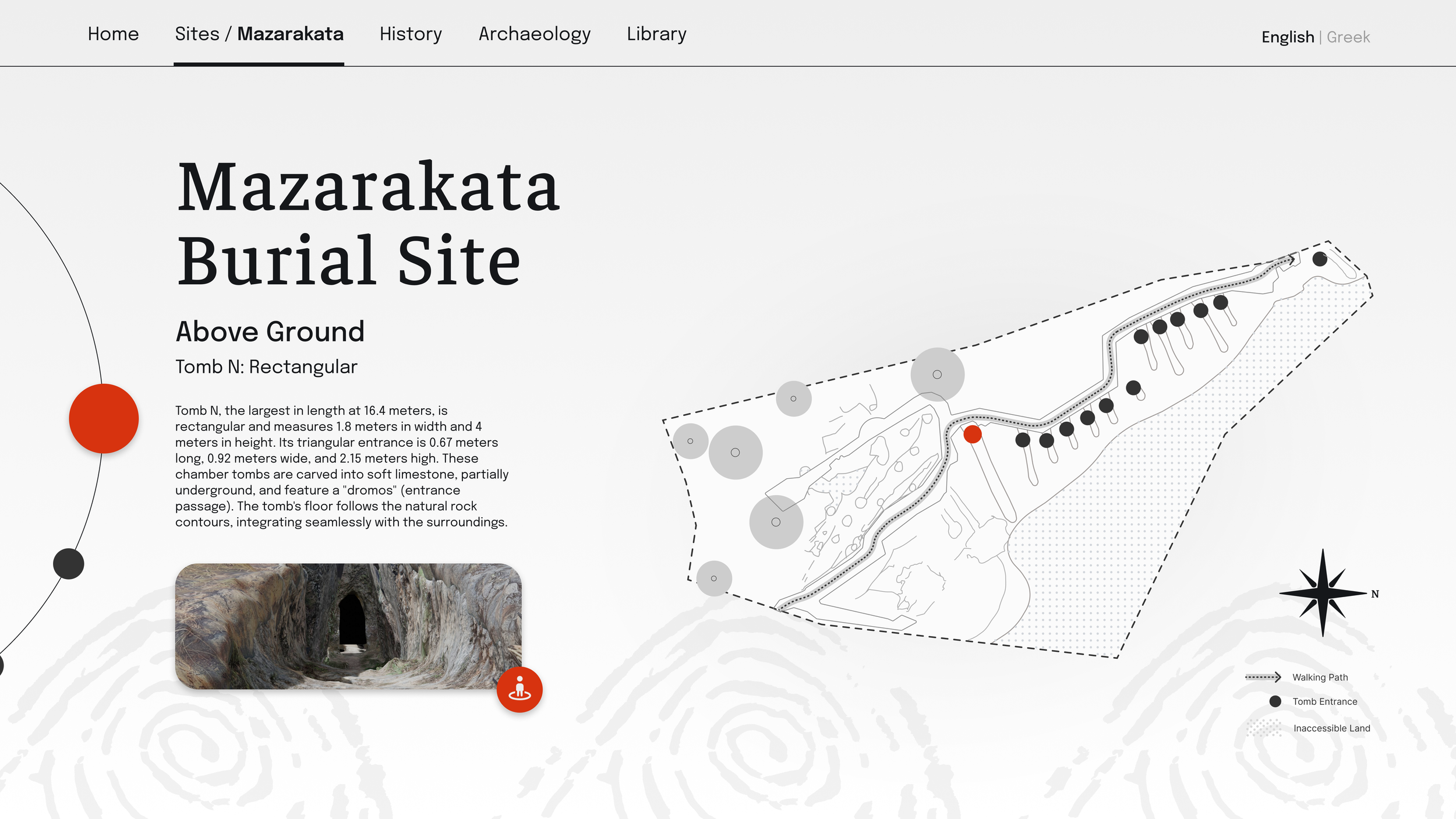




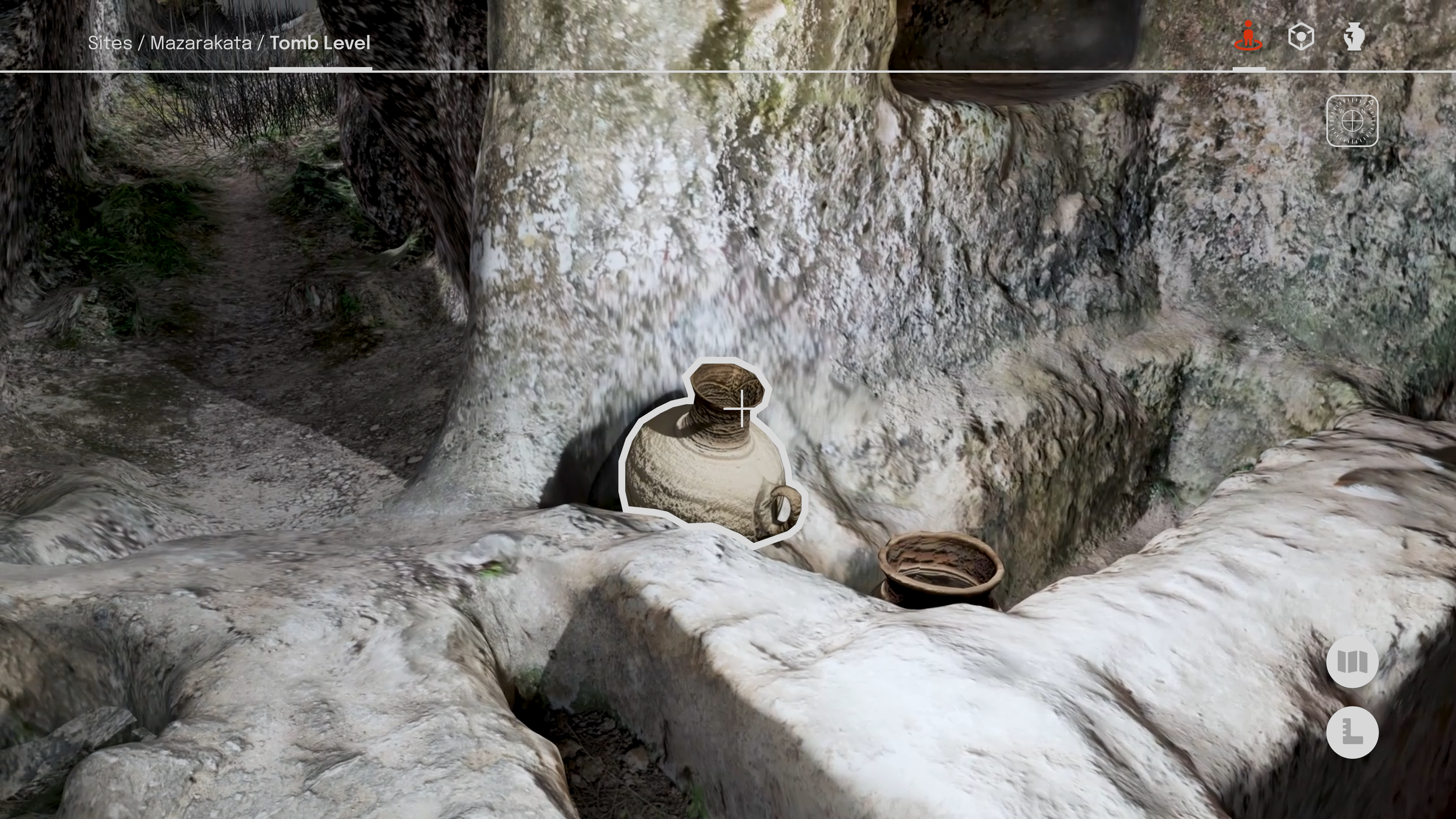
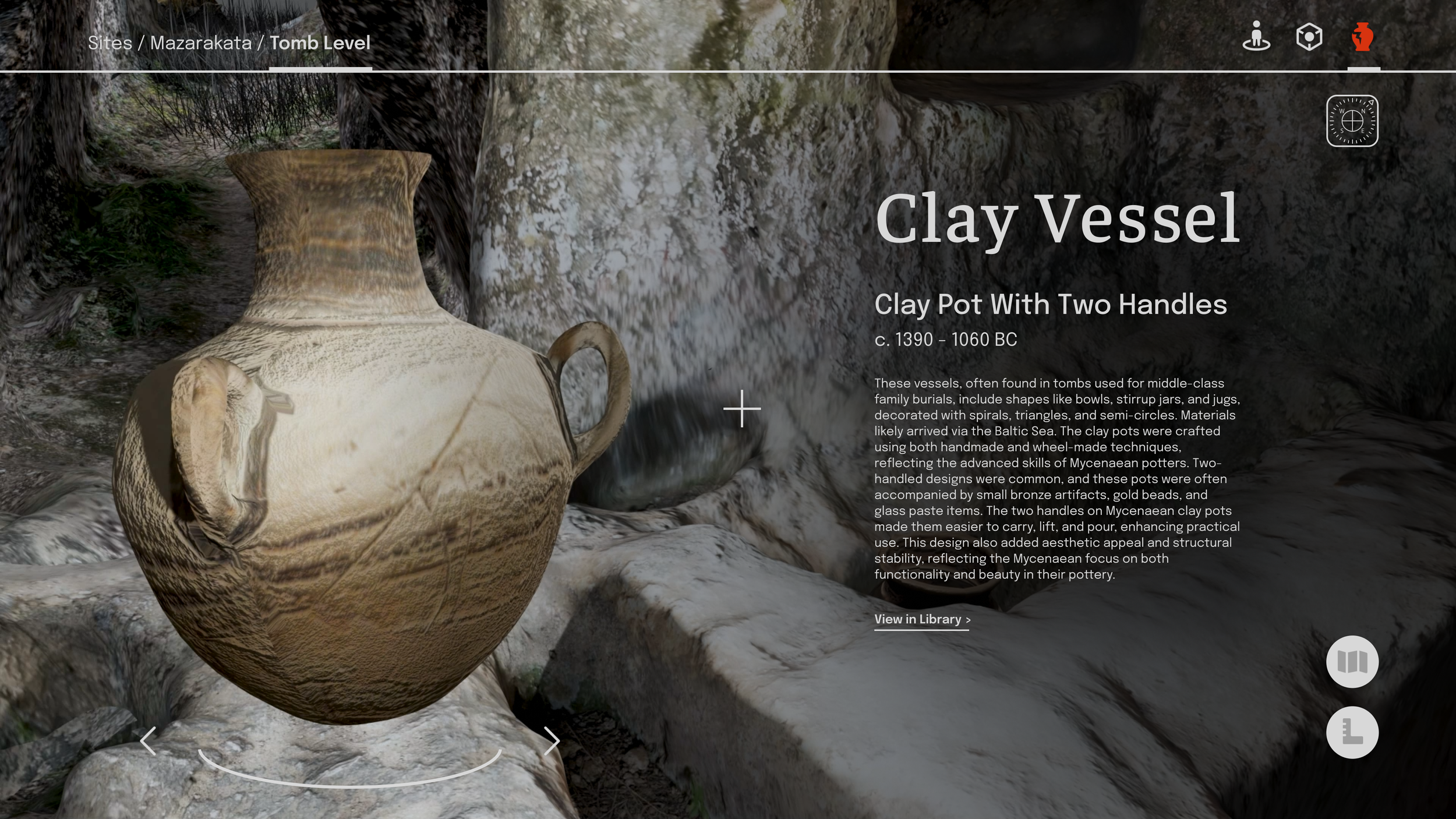
Scanning + Imaging
Our 3D scanning process focused on Tomb N of the burial site due to its large size and better accessibility. We started by sketching out the burial grounds and tested various 3D scanning software. After standardizing the software and scanning parameters, we used Scaniverse with a 3-meter camera range to capture detailed scans of the area.
Mapping
We divided the site into smaller sections and created individual models of the tomb entrance and interior. These were then polished and combined in Blender, merging over 20 scans into one comprehensive 3D model representing about one-third of the entire site. The final product was used to create promotional, documentation, and showcasing materials.
Three pots were also modeled based on artifacts originally excavated from the Mazarakata tomb, offering users an accurate view of their original appearance and helping them better understand Mycenaean craftsmanship and culture.
Artifacts
Research
Our research aimed to provide a comprehensive understanding of the Mazarakata burial site and Mycenaean civilization. We used online resources, primary documents from archaeologist Eleni, and books from the Argostoli library, along with external scholarly research. This helped us learn more about Mycenaean daily life, burial practices, and artifacts. Despite some uncertainties in studying ancient culture, our findings contribute to a broader understanding of the Mycenaean view of the afterlife.
Ancient Mycenaean burial rituals were significant, reflecting how we honor the dead today. The Mycenaeans saw death as a transition to the afterlife, and funeral rituals helped guide loved ones on this journey. They built three main types of tombs: Chamber Tombs, Tholos Tombs, and Shaft Tombs, differing in size but all designed to house the deceased. Wealthier individuals were often buried in Tholos and Chamber tombs, accompanied by artifacts like pottery, jewelry, and weapons, which were believed to aid them in the afterlife and honor their contributions.
Mycenean Tombs
Funeral pyres were used for disinfection and odor control when tombs were reopened. Burials often placed the deceased on their side or prone, with multiple bodies sometimes layered in a single pit. In Mazarakata, for example, six skeletons were found in one pit, with earlier bones moved to make space. The dead were buried without coffins, resting on stretchers with bronze overlays. The burial process also included a ceremonial meal at the grave, as evidenced by animal bones and pottery fragments found at the site.
The Mazarakata burial site was first discovered between 1810 and 1813 by Swiss Colonel Charles Philippe de Bosset, the governor of the island, during the construction of a nearby road. Four to nine tombs were excavated and looted during this period, with 43 clay vessels and various artifacts sent to a museum in Switzerland, where they remained forgotten for some time before being later identified and studied.
Excavation
In 1899, Kefalonian archaeologist Panagis Kavvadias rediscovered the site, conducting excavations between 1908 and 1909, during which he uncovered 16 chamber tombs and a tholos tomb that has since been lost. In the early 1950s, Kefalonian archaeologist Spyridon Marinatos excavated a 17th burial chamber that was revealed following a partial road collapse.















